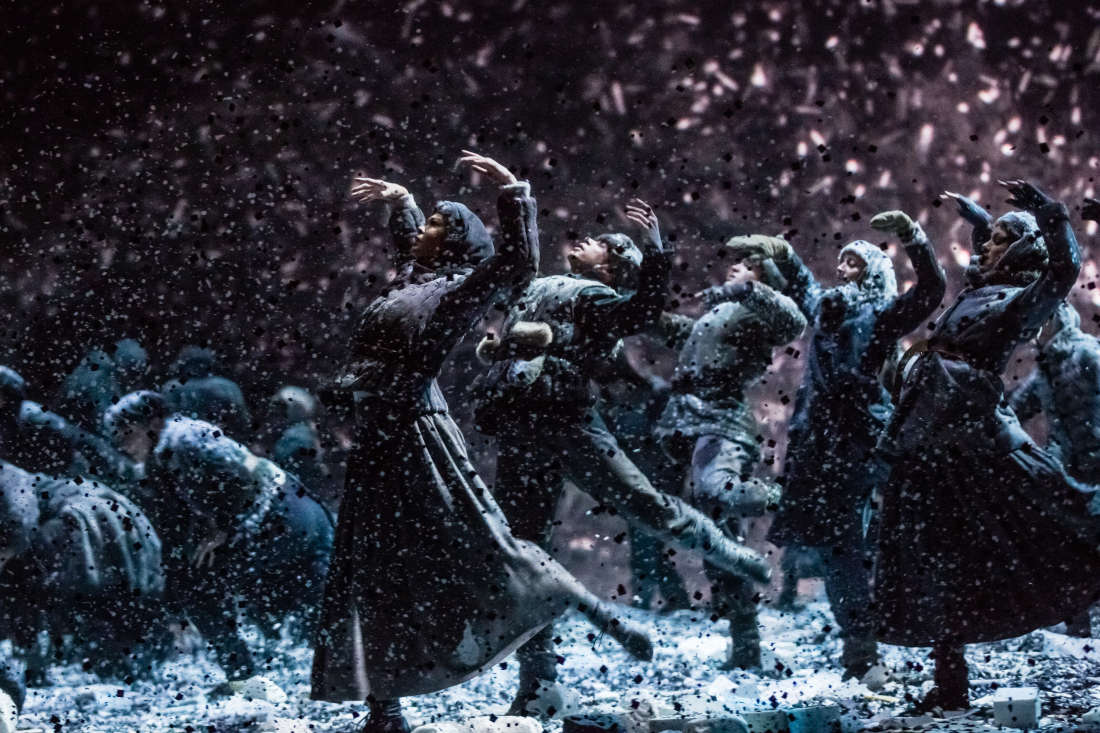The Palace Garnier is a beautiful building, ornate and baroque and frankly luscious inside. (See previous shots of the lobby.) The performance hall is just as sumptuous, with tiers of box-lined balconies and everything done in red velvet and gold.
The boxes look nice, and as you can see, they serve as wonderful vantage points for looking at the other boxes. The stage? Not so much.
The neighbor-box dividing wall --- lined in red and buffering me from the lower classes who were presumably permitted into the lesser boxes --- blocks one corner of the stage. The overhanging lip of the next tier blocks the upper third of the area, including the opera titles. Not pictured here, but the people sitting in front of me, as they variously shift and lean to try to see the stage, blocked even more.
So the visual part of the spectacle was difficult.
Luckily, the Opéra Garnier production of Tchaikovsky's Iolanta used only an inset, centered portion of the stage. I read the synopsis beforehand, so the omission of the opera titles (and my weakness in Russian) did not impede my enjoyment of the music and singing. It was lovely, one completely standard and satisfactory unit of opera enjoyment. So of course I have almost nothing to say about it, and lots to say about the rest of the evening.
Following the opera, the ballet performed The Nutcracker, in a non-Christmas-themed staging that I wasn't able to cohere into a single plot. The various scenes were only loosely connected, via interesting stagecraft. The single-room set in which Iolanta took place drew back and slotted into a larger set which filled the stage, where The Nutcracker began as a 1920s-themed children's birthday party. (Of note: Iolanta had a Christmas tree onstage, which was removed for The Nutcracker, in some kind of reverse-Chekov's-gun/red herring ploy.) This included a very cool game of improvised freeze-tag synchronized with the music. Ballet companies should play freeze tag in public more often, it is really fun to watch. This scene ended with a harsh exploding noise, and the building apparently (?) succumbed to an earthquake, with rubble (!) falling from everywhere and blanketing the stage. A transparent screen completely divided the stage from the theater, so no rubble or its considerable dust settled on the orchestra or audience. The pas de deux was staged as two survivors of this earthquake. (I think. A lot of it took place on the occluded side of the stage.) Then, in my favorite use of the screen-wall, giant fans gusted snow all across the stage to its full height, like a blizzard. Heavily wool-jacket-bundled ballet dancers did a kind of freezing coordinated squall dance that was interesting, and not really like other ballet I've seen.
 |
| Ballet in a snowstorm. |
Check out the gallery for more, and to get an idea of the variety of spectacle presented across the evening.
This post's theme word is furfuraceous, "covered in dandruff" or "flaky". I do not envy the scene-changers their furfuraceous task during the second intermission.


No comments:
Post a Comment